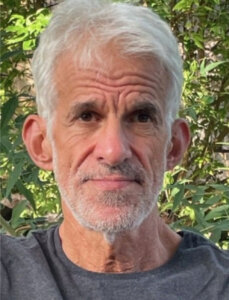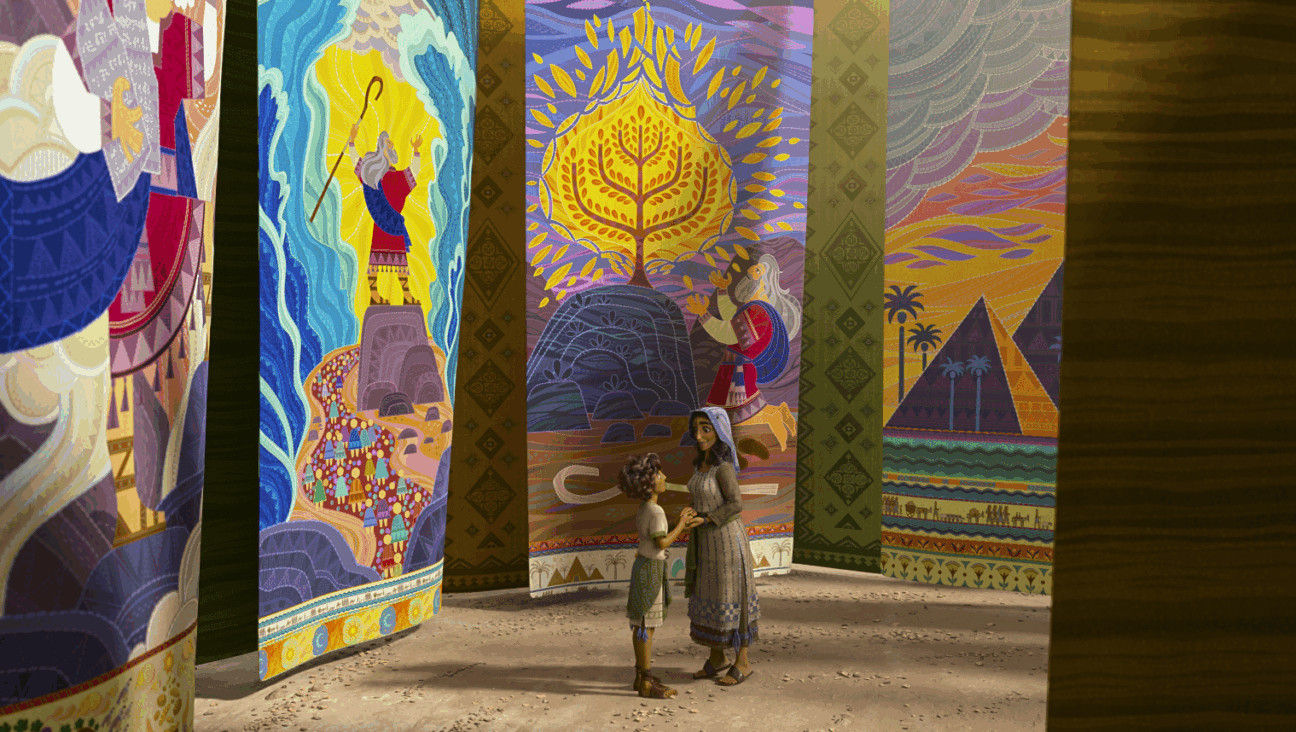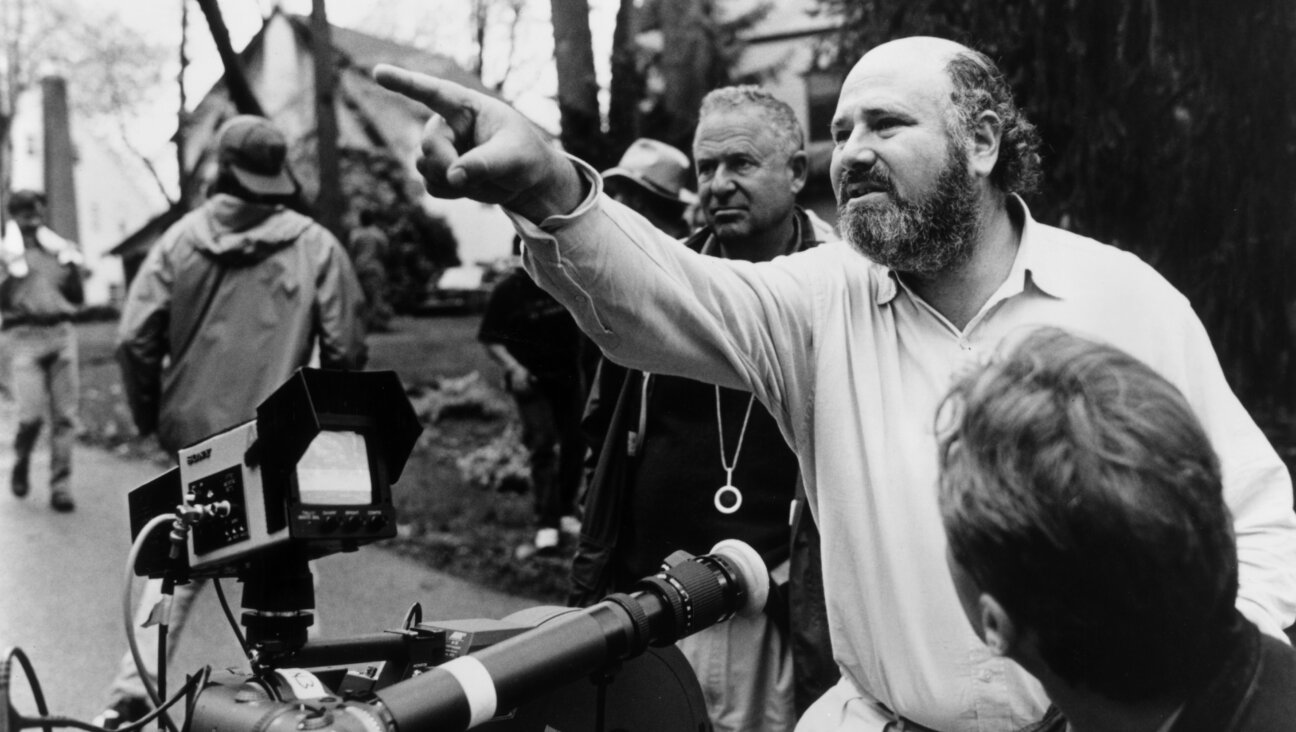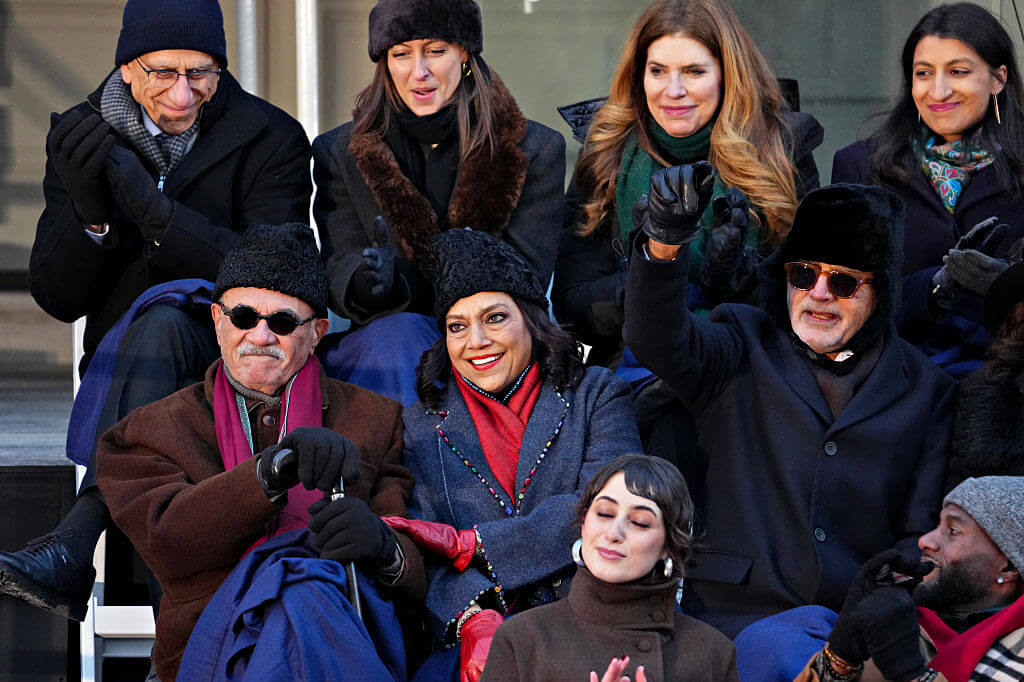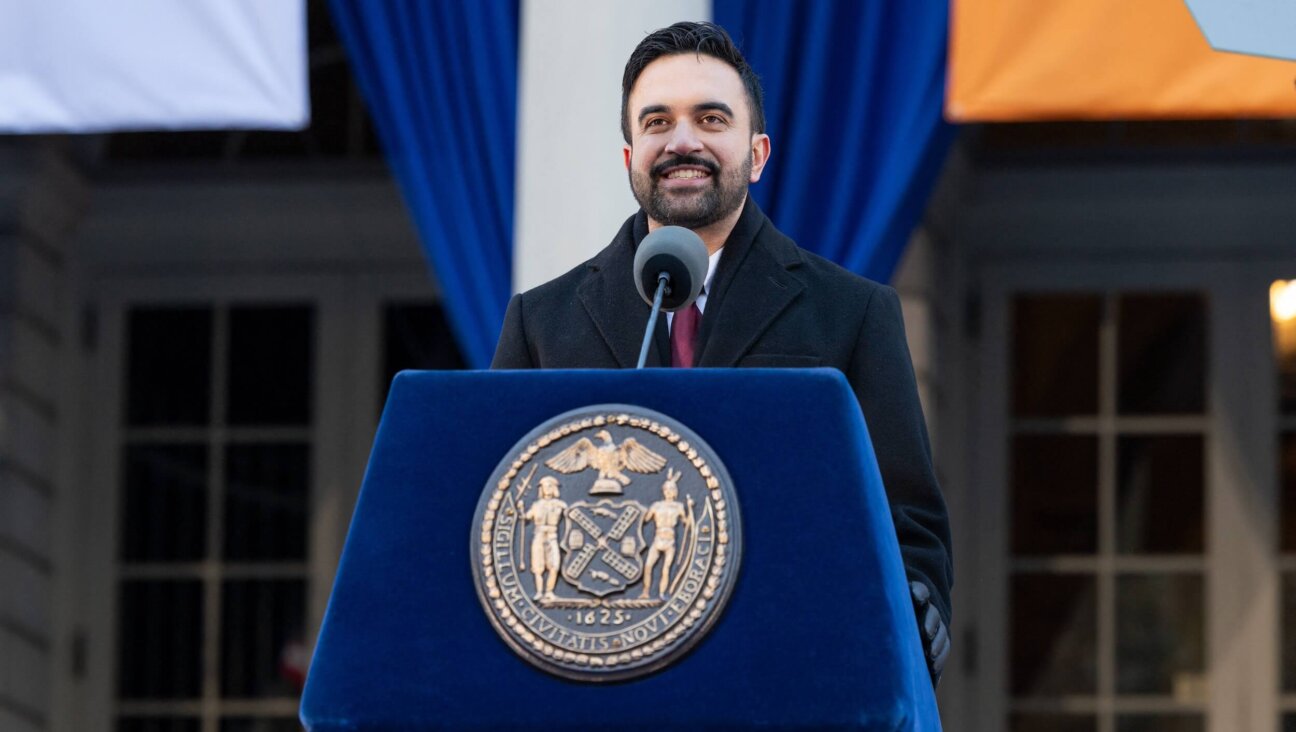How 10/7 — like 9/11 before it — irrevocably changed the meaning of a pair of numbers
Lee Yaron tells ‘100 human stories’ amid the horrific wreckage of 10/7

A demonstrator raises an Israeli national flag smeared with red paint as others block traffic on a main road during an anti-government protest calling for the release of the remaining Israeli hostages. Photo by Getty Images
10/7: 100 Human Stories
By Lee Yaron
St. Martin’s, 188 pages, $15
Earlier this month, when we marked the anniversary of 9/11, it was the occasion to recall the lives of all those who died on that horrific day — the lives of those whose business was to save the lives of those who had been literally minding their own business until the airliners struck the twin towers. On that day, the deadliest terrorist attack in our history — striking not just the World Trade Center, but also the Pentagon and the passengers on Flight 93 — ended the lives of nearly 3,000 men and women and started our endless war on terror
On 10/7, as we mark the first anniversary of the deadliest terrorist attack in Israel’s history, one that struck the kibbutzim, moshavim, and towns along the Gaza Strip, ending the lives of more than 1,000 Israelis and foreign nationals, we also mark the beginning of another war without end.
Both anniversaries remind us of the uncanniness of certain dates. The very arrangement of numbers, it sometimes seems, invests them with an ontological, teleological, even numerological significance, one that suggests a bond between the numerals and necessity. George Steiner alludes to this in In Bluebeard’s Castle when he remarks that certain years, like 1789, 1793, 1812, take on a “distinct, graphic individuality” as they are unfolding. They are more than “temporal distinctions,” he affirms: “They stand for great storms of beings, for metamorphoses of the historical landscape.”

This can be said not just of 9/11 — no other arrangement of numbers, it seems, can capture what occurred that day — but also of 10/7. That same day was, of course, Simchat Torah, a festive holiday that perhaps influenced Yahya Sinwar’s decision to launch the attack that same morning. But that is not the date’s significance, to my mind. Instead, as I look at the cover of Lee Yaron’s new book 10/7, I cannot escape the impression that it has the same “distinct, graphic individuality” as 9/11.
Distinct, graphic individuality also describes Yaron’s writing. While reading her accounts of 100 human lives — the book’s subtitle — that were taken or traumatized that day, I was often reminded of another journalist: Albert Camus. Just as Yaron’s newspaper, Haaretz, has been a constant thorn in the side of the long series of Israel’s rightwing governments, so too was L’Alger Républicain, the leftwing newspaper where Camus began his career, a persistent critic of the French government.
Moreover, just as Yaron and her colleagues have persisted in reporting on the deepening misery of the Palestinians in the West Bank and Gaza, Camus also persisted in reporting on the cruelties of the institutionalized forms of racism faced by the country’s Arab and Berber populations. And while Camus’ obstinacy eventually led to the government decision to shut down L’Alger Républicain, Haaretz’s stubborn reporting of inconvenient truths has spurred accusations of treason and threats of violence against Yaron and her colleagues. In the end, just as Camus’ fellow pieds-noirs remained deaf to his warnings, the bulk of Israelis, Yaron concludes, “are content to ignore the plight of the other side, and in that ignorance of Palestinian life lies Palestinian dehumanization.”
Yet, Yaron’s focus in 10/7 is not the dehumanization of the Palestinians, but the destruction of more than a thousand Israeli lives. The irony, if that is the word, is that these were the lives of men and women who, far from ignorant of the wretched condition of Palestinians, regretted and tried to repair it. In her telling of these human stories, Yaron’s writing resembles that of the author of The Stranger. There are few adjectives, fewer flourishes, even fewer commentaries.
Consider her account of the fates of 13-year-old Liel and Yanai Hetzroni, twin sisters who belonged, as did their parents and grandparents, to Kibbutz Be’eri. Along with several other members of the family, the twins were captured by Hamas terrorists on 10/7. When an Israeli tank arrived on the scene, the terrorists, rather than surrendering the family members, continued to shoot. The tank fired two shots at the house; both the terrorists and hostages, with two exceptions, died, though it is not clear who killed whom. What is clear, though, is the aftermath: Yanai and Liel were not the two exceptions. The former’s body was soon found, while the latter was eventually “identified by archaeologists employed by the Antiquities Authority, which had been recruited for their expertise locating human remains.”
In another story, Yaron opens with a phone conversation. A young rabbi asks an older Orthodox Jew, Haim Utmazgin, a question: “How long does it take for a corpse to rot?” As Utmazgin (and we) then learn, the rabbi is at the site of the Nova festival, tasked with guarding more than a hundred bodies of young men and women murdered there a few hours earlier. “I am not sure what to do. Maybe you have some advice.”
An unbelieving Utmazgin, who is the director of the National Burial and Identification Organization, asks the rabbi to switch to video: “He saw bodies of young ravers stacked up near a bar; bodies piled by a DJ booth and wedged between the speakers…bodies of half-naked and naked women near a camping area…Some bodies had been burned so badly that they’d melted into one another.”
One last example: the Bedouin villagers of the Negev. Here as elsewhere, Yaron places her story of the Al-Kran, Abu Sabeth, and Abu Karinat families against a spare but sharply defined historical background. They exemplify the peculiar predicament of Israel’s Bedouin population. An indigenous minority of Muslim Arabs, the 300,000 or so Bedouins are Israeli citizens who, Yaron notes, serve in the Israeli Defense Forces, often with distinction. Nevertheless, this impoverished minority suffers from exclusion and discrimination, deprived of the basic services Jewish Israeli citizens take for granted.
On 10/7, the absence of these services — which includes the provision of shelters — proved fatal. A salvo of Hamas missiles exploded in several of the non-recognized Bedouin villages. The casualties ranged from the aged to children to the yet unborn — Sujood Abu Karinat lost the daughter she was carrying — who were brought by villagers to a nearby hospital because they could not contact the local emergency services.
When the families gathered to mourn these deaths, Yaron writes, representatives from a local chemical company “donated a concrete safe room to be placed adjacent to the houses. While the mothers appreciated the gesture, they were left wondering how to choose which of their remaining children to save. There were fifty-six people left in the family, and the safe room could only accommodate six.”
In his essential book Zakhor: Jewish History and Jewish Memory, Yosef Yerushalmi observes that in the Hebrew Bible, the “injunctions to remember are unconditional, and even when not commanded, remembrance is always pivotal.” Yet a funny thing happens in this Jewish edition of “Back to the Future.” As Yerushalmi suggests, rabbis decided that after one catastrophe too many — the destruction of the Second Temple in 70 CE or the expulsion from Spain in 1492 — that “they already knew of history what they needed to know.” In other words, there was a repeated pattern to history, one which renders the past not just prologue to the present, but to the future as well.
Yaron is alive to this problem — or, at least, a problem if one is a modern historian or journalist. This was, perhaps understandably, not a problem for a medieval rabbi, but less understandably, it is also not a problem for a modern Israeli prime minister who inflames his followers by framing the Hamas massacre as a recurrence of Amalek. As Yaron writes in her introduction, “Israelis and Palestinians have become blind to each other, and deaf to each other’s wailing, unwilling or unable to acknowledge the mutuality of pain, the common lot of loss; each tragedy only serves to reinforce and expand the walls between us, as each side denies the other side’s facts, emotions, and even right to exist.”
The vignettes etched by Yaron, restrained and rapid, at times made me turn away — a luxury not afforded to the survivors or first responders. In a way, Yaron is among those early responders. As such, she faces a difficult task. In his book Holocaust Testimonies: The Ruins of Memory, Lawrence Langer observed that when it comes to such testimonies, the speaker is acutely aware that “all telling modifies what is being told.”
This also applies to those, like Yaron, who speak on behalf of others. In her effort to be dry and direct — to remove herself from the testimonies she conveys, all the while guiding the reader — she took on a great challenge. Yet Yaron succeeds. Her book is vital for Jews and non-Jews, for Israelis and Palestinians, a book that will horrify but will also help us remember.
Join Lee Yaron in conversation with Forward editor-in-chief Jodi Rudoren on Oct. 7 at 7:00 p.m. ET. You can register to participate virtually or in person at Sixth & I in Washington, D.C.
